Challenge: Create a mobile app that provides mental health support for users.
Project Outcome: A mobile app focused on improving mental health through setting and achieving goals and tracking moods, goals and schedules.
My Role: UX/UI Designer
Mentor/Design Director: Courtney Leonard
Project Duration: 4 weeks (April 2019)
Research
The majority of popular mental health apps are geared towards people with Depression, Anxiety and Stress. In addition, a large number of these apps are focused on meditation or talk therapy. While many people struggle with Depression, Anxiety and Stress, those who struggle with different, less common, mental health issues lack mental health app resources. I set out to design a mental health app that approached mental health in a different way and focused on issues other than Depression, Anxiety and Stress.
My research goal was to explore mobile apps that focused on mental health issues other than Depression, Anxiety and Stress and apps that use unique tools and features to improve mental health. I also needed to learn how users approach managing symptoms in ways other than meditation or talk therapy and understand user trends and patterns.
Research Goals:
Research mobile apps that are not focused on meditation and/or talk therapy and also apps that focus on mental health issues other than Depression, Anxiety and Stress.
Learn what mental health apps users enjoy using and which features benefit their mental health needs
Discover mental health issues users face and how a mobile app can accommodate user needs and wants.
Competitive Analysis
After researching a variety of mental health apps and also fitness tracking health apps, I narrowed down 6 mobile apps to examine and include in a competitive analysis.
Findings:
Many apps featured user progress and past activity. This feature allows users to track moods, activities and potential trends correlating a user’s moods with daily activities or habits.
Another popular feature was a daily “check in” where users record their moods, thoughts, activities and/or goals. This feature allows users to connect with their emotions and set intentions for the day.
Two apps featured games that were meant to improve user focus. There were also games and puzzles meant to calm users.
Many apps, including Pacifica and Happy Not Perfect, offered daily meditations in addition to other features. Pacifica has a large community and a variety of “chat groups” about specific topics that users can join.
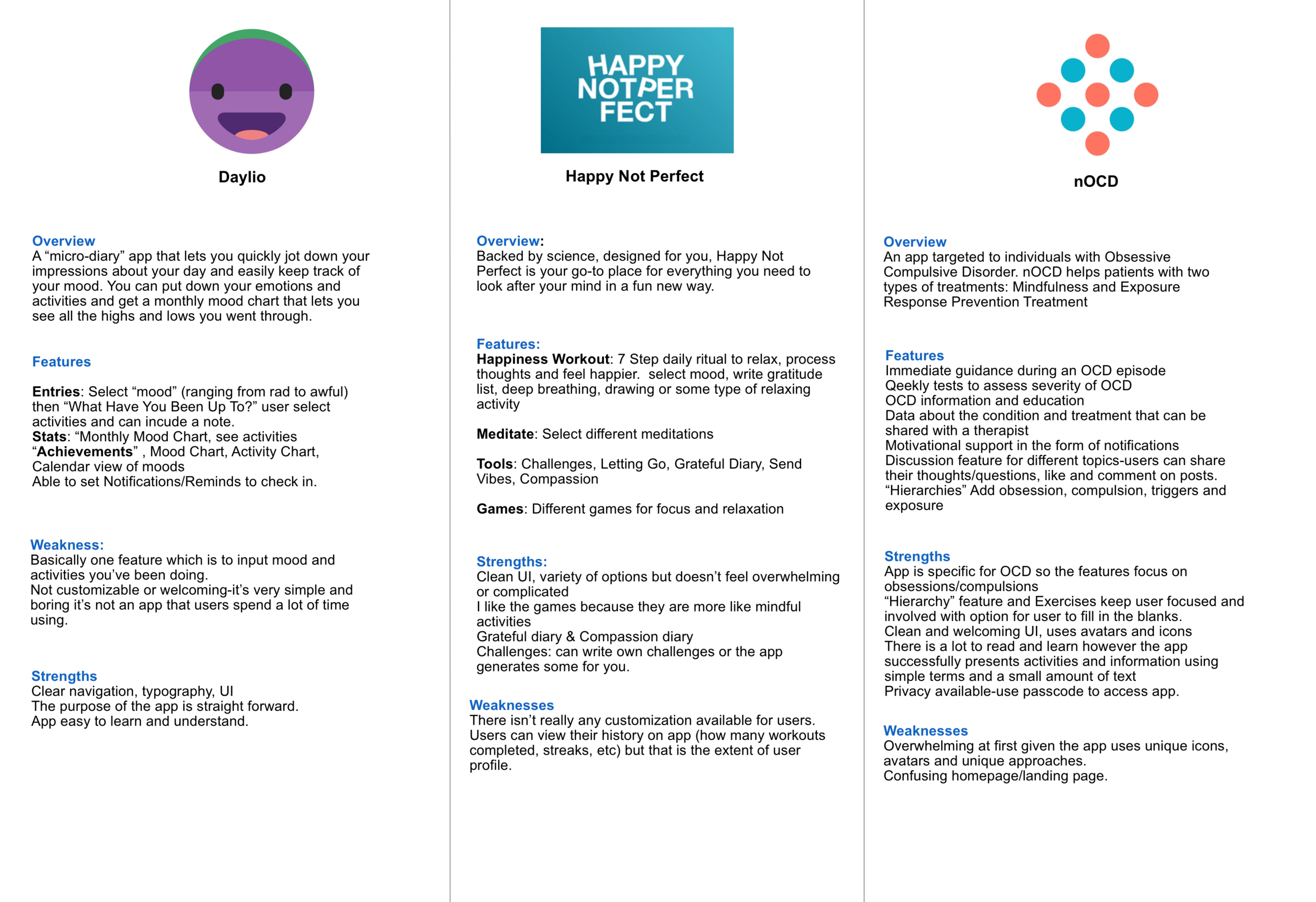
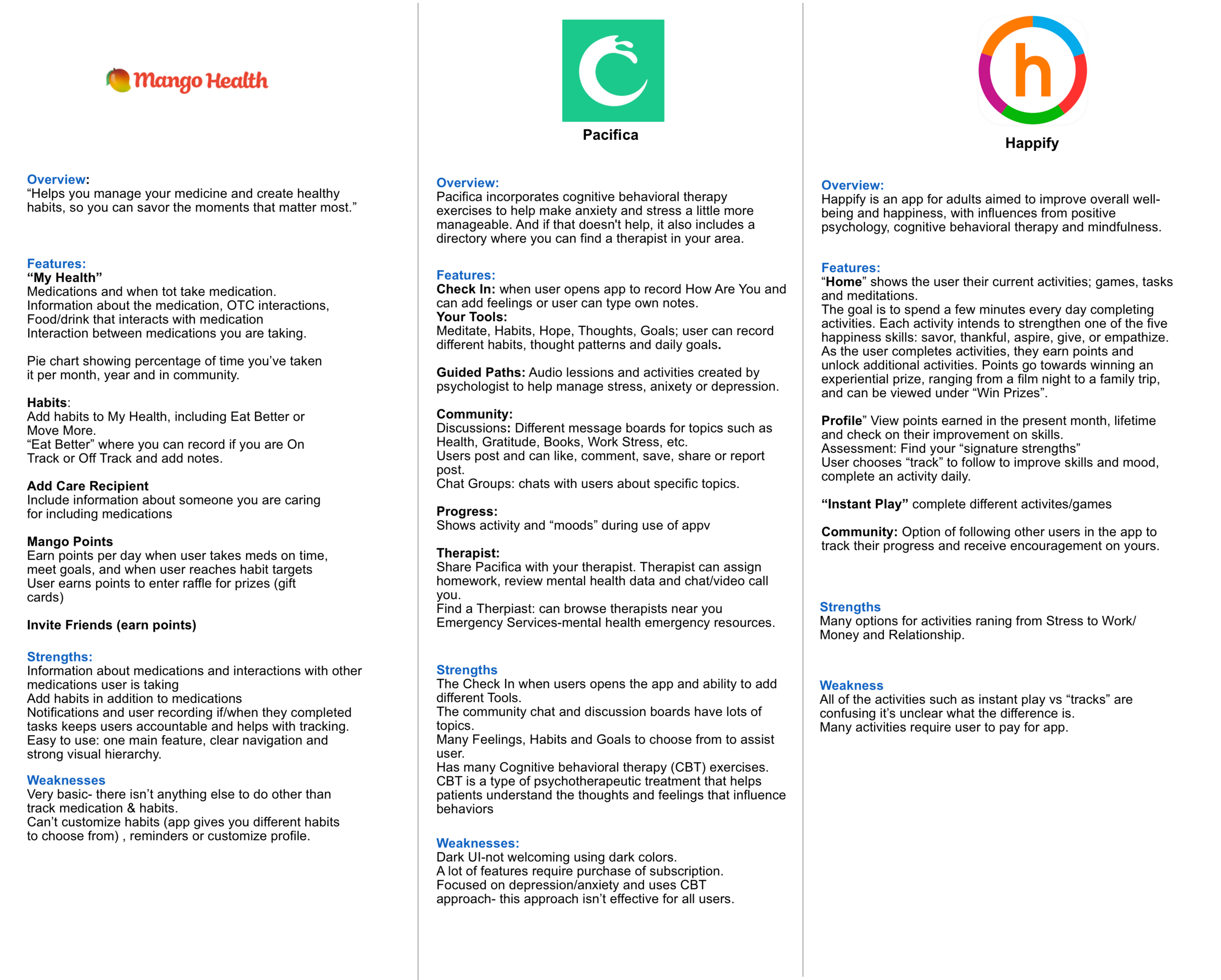
User Surveys:
The survey asked users about their experience using health apps, which features they enjoyed, mental health topics users are interested in and their mental health priorities. In addition, I wanted to understand how users approach changing their own behavioral habits and what “tools” are used to manage or improve their mental health.
Survey Findings:
84% of the individuals were between the ages of 25-34 and 69% currently use a mental health or health app
A common feature participants mentioned they enjoyed about the health apps they currently use or have used in the past was the ability to track their progress, health, daily steps and moods.
100% of participants are interested in stress and reducing stress and 84% of users are interested in Anxiety and reducing anxiety.
Managing depression and improving body image is another mental health priority for users with 61% of participants stating this was a priority.
The top “tools” participants use to managing metal health is diet and exercise, followed by therapy and meditation.
My initial goal was to create an app that wasn’t focused on Depression, Anxiety and Stress however, based on survey results, 100% of participants were interested in reducing stress and the other top priorities for participants was reducing anxiety and managing depression. Based on these results, I knew I needed to include depression, anxiety and stress in my design and research focus.
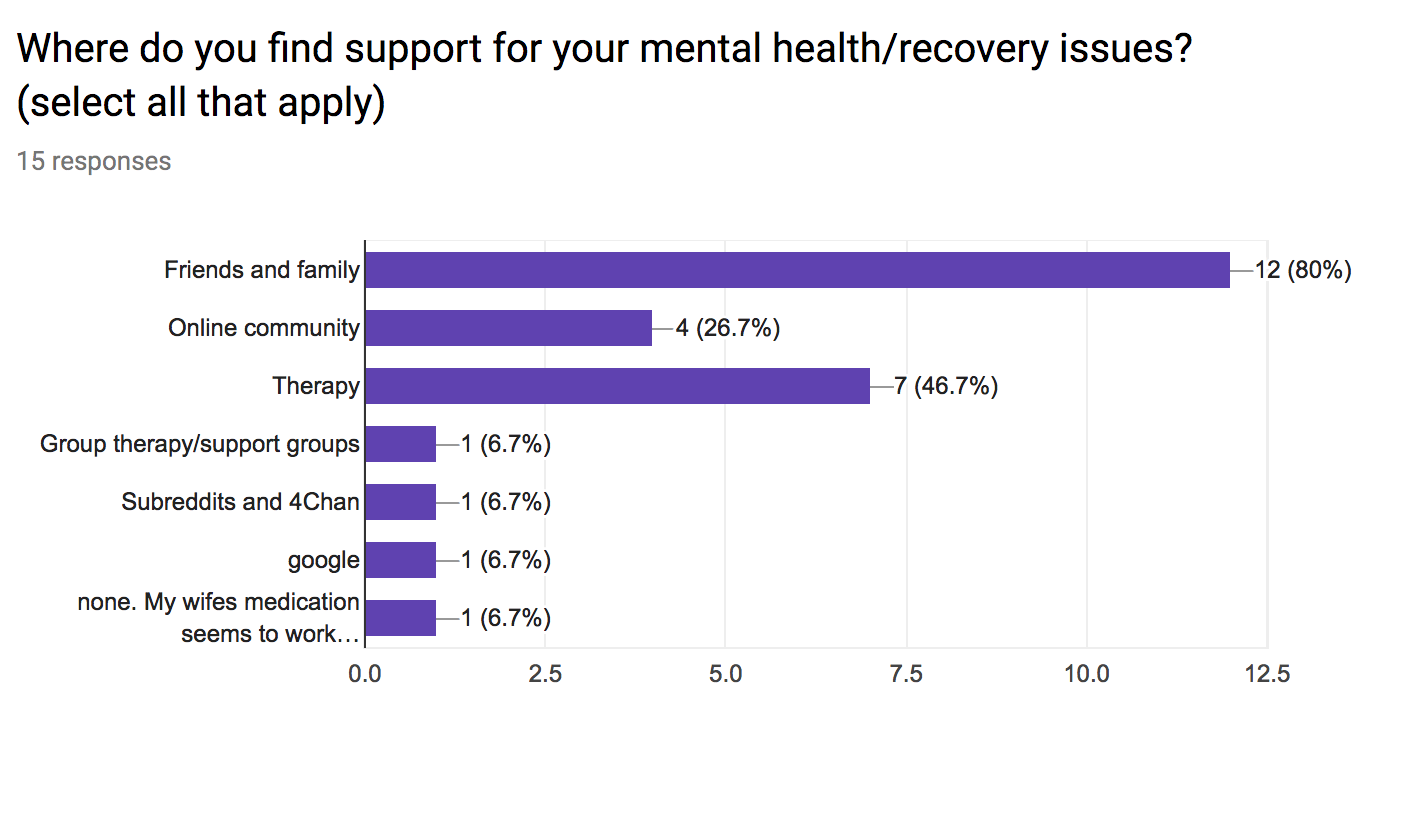
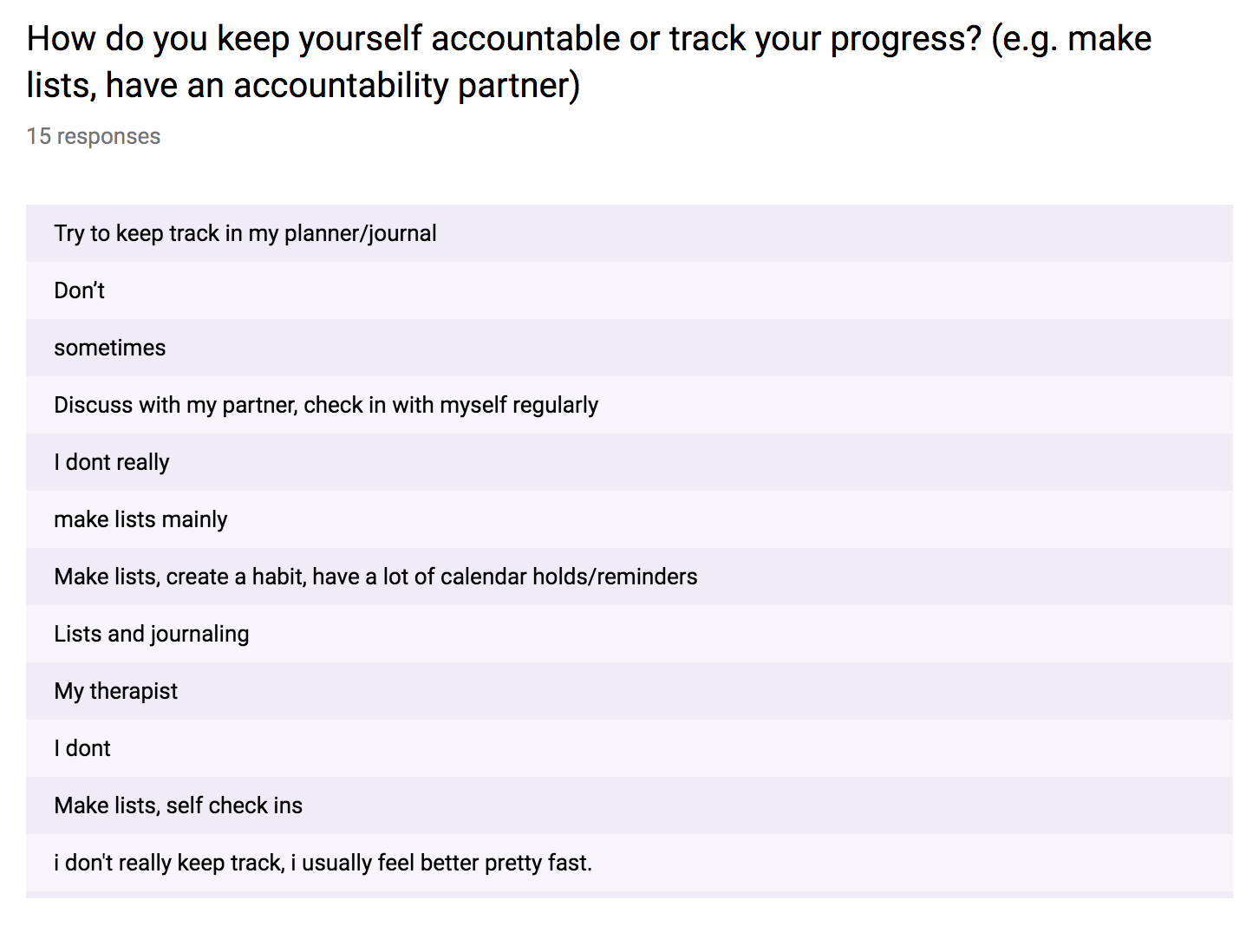
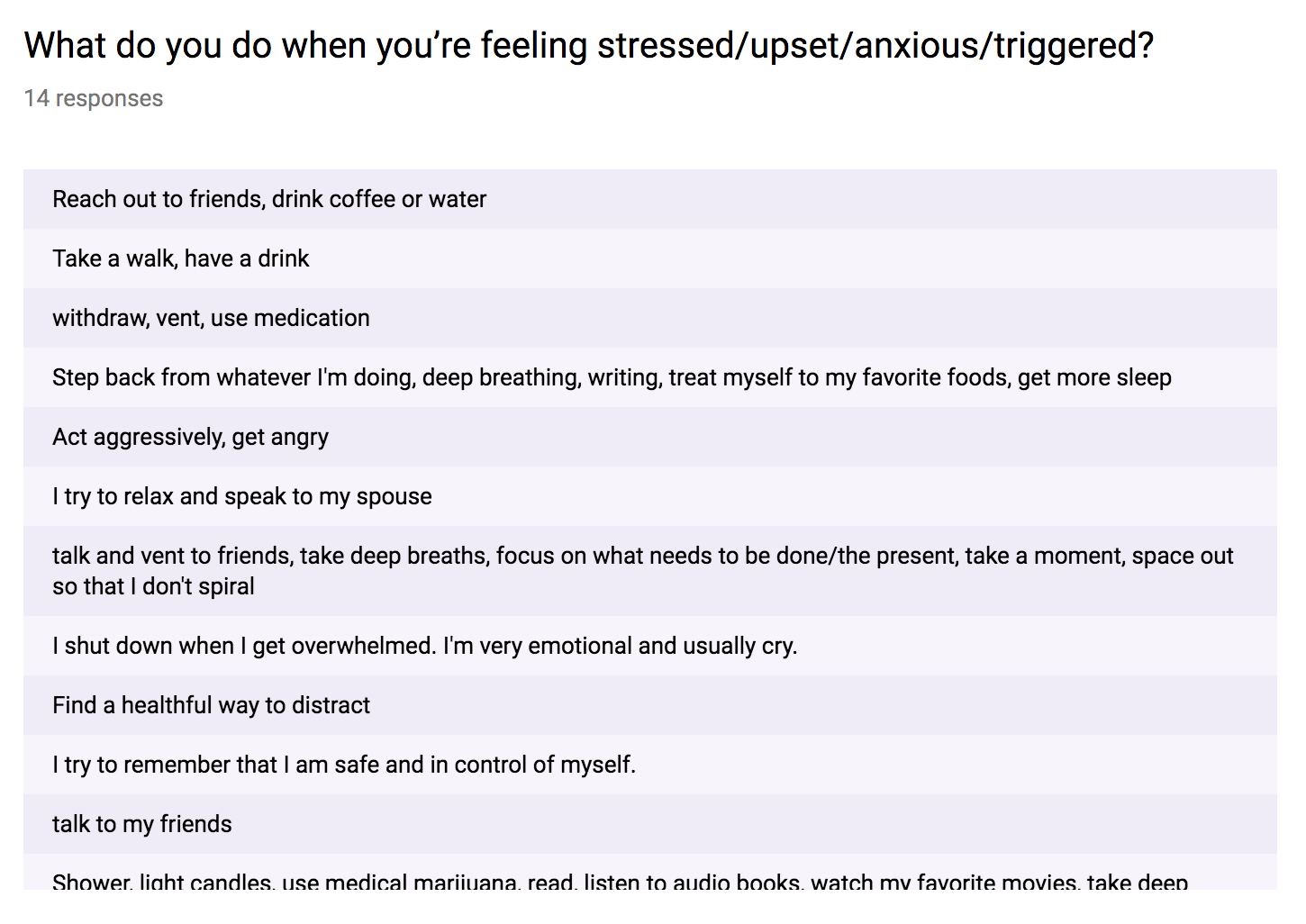
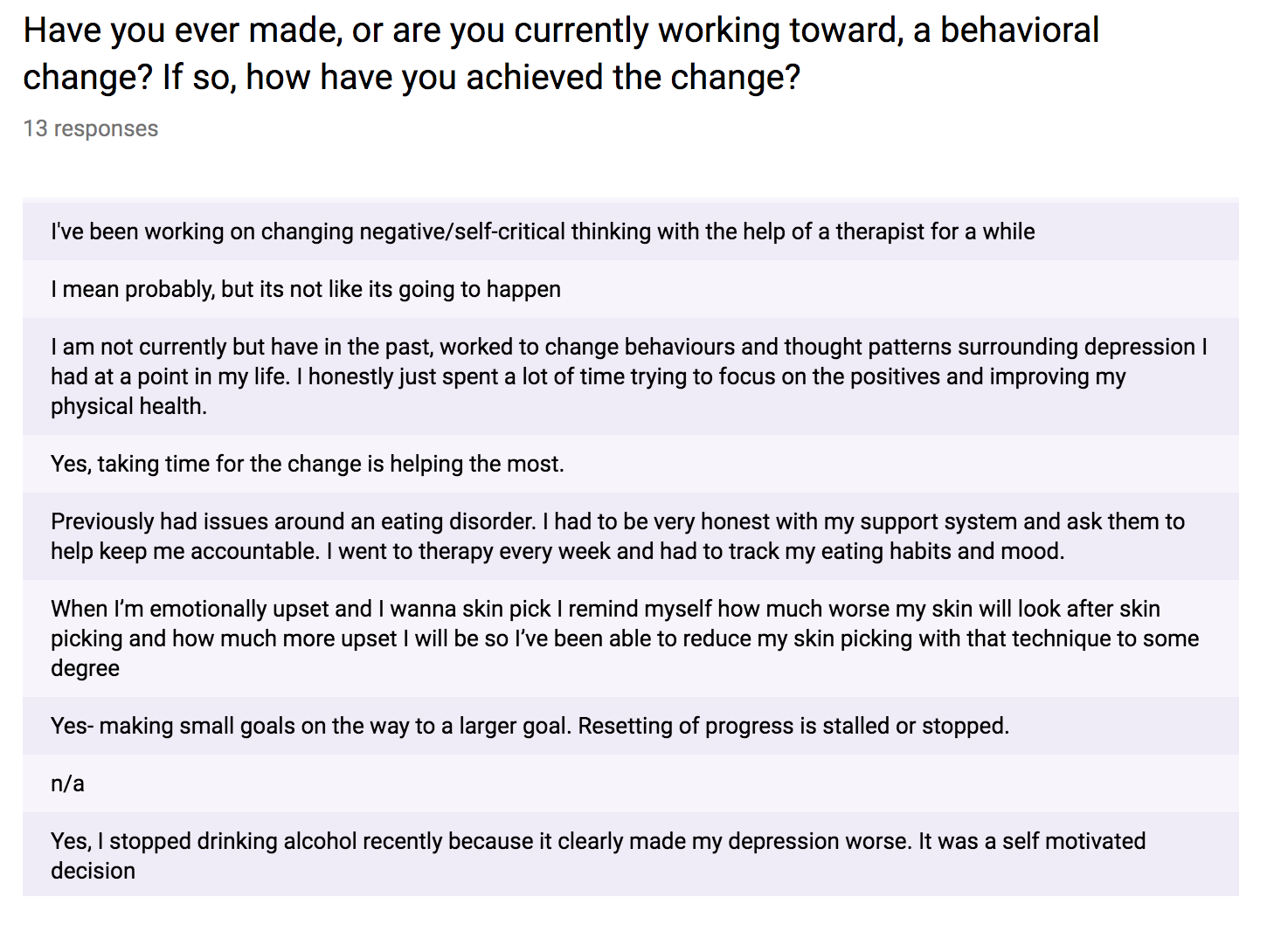
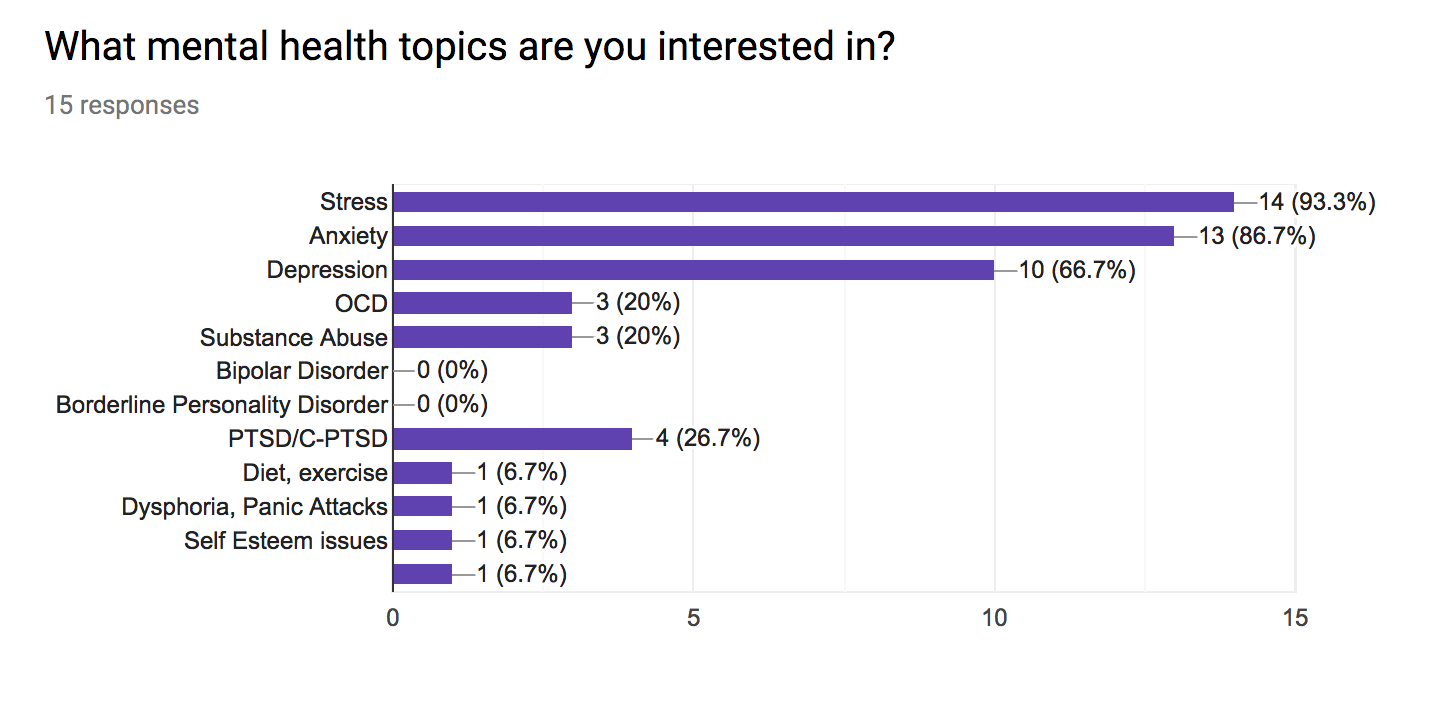
User Interviews
User interviews allowed me to have in depth conversations with people how how they manage their mental health and the steps they take to feel better, achieve goals and how they manage their mental health. Participants were also asked what mobile app features would be beneficial for managing mental health.
Interview Findings:
I interviewed 4 individuals ages 24-29
All of the participants mentioned writing lists and goals as a method they used to achieve health goals and change negative behaviors.
All of the participants said a tracking feature for goals, progress and priorities, would be beneficial for a mental health app.
One participant suggested being able to track her mood in addition to outside factors (such as weather and activities at work) to learn more about how her mood is affected by a variety of factors
All of the participants stated they use their phone calendars and the notes app on their phone to keep tracking of their schedules and priorities, two participants also use a day planner/post it notes for schedules and to do lists.
Define & Ideate
Personas
Based on research, two user personas were created. These two distinct personas with different needs, wants and pain points represent two potential users who will influence design decisions.
App Map
After creating a product roadmap, the App Map was created to visualize the structure and organization of the app. After research, user survey and interviews and creating personas, the app design was focused on setting and managing user goals and schedules. It was also important to include a progress feature and a daily check in.
Design & Test
Sketching Wireframes & Low Fidelity Wireframes:
After sketching the app pages, wireframes were created on Sketch. A prototype was created on Invision for usability testing.
Usability Testing
A prototype on Figma was used to conduct usability testing.
Tasks for usability testing:
Check In and go through Check In steps. Rate your mood "5", add daily mood "happy"
Add "meditate" to daily goal.
View details of today's event Yoga Class.
View details of the daily goal "Exercise for 20 minutes"
Usability Testing Feedback:
New icon for “view more” on events
Drop down for event details instead of pop up window
Drop down for “goal details” instead of pop up.
Add dates to goals for “upcoming goals”
Branding & UI
Sage App has a warm color palette and simple UI design and typography.
High Fidelity Wireframes & Prototype
Changes were made to wireframes based on usability testing feedback and UI design was applied to the wireframes.
Next steps
Moving forward, there will be further usability testing and changes will be made based on feedback.
In addition, I would like add more features to the app. Given my time restraints, I wasn’t able to test, research and design all of the features I initially wanted to include and explore. One feature I would like to include is a “Tools” feature where users can learn more about healthy coping skills, resources about different mental health issues and assistance with finding therapy and support groups.
Since my original goal was to create an app that wasn’t focused on Depression, Anxiety and Stress, with more usability testing and designing I would like to expand the features and be more inclusive to different mental health issues including addiction, recovery, OCD and bi-polar disorder.




